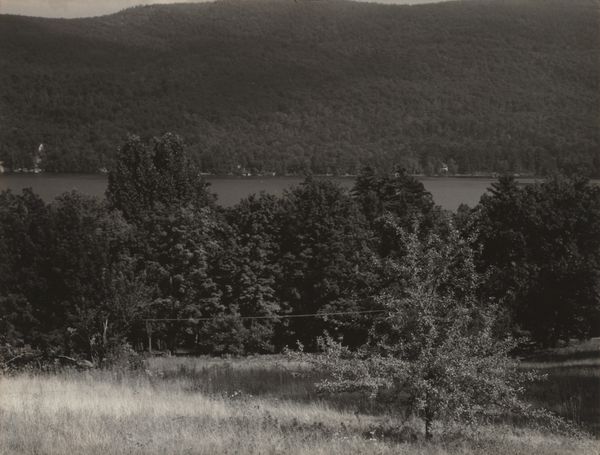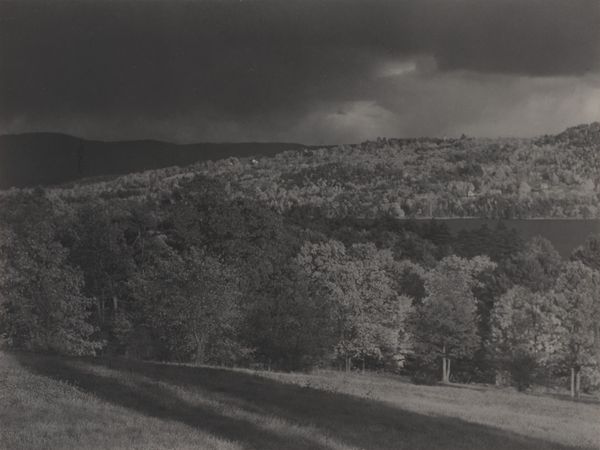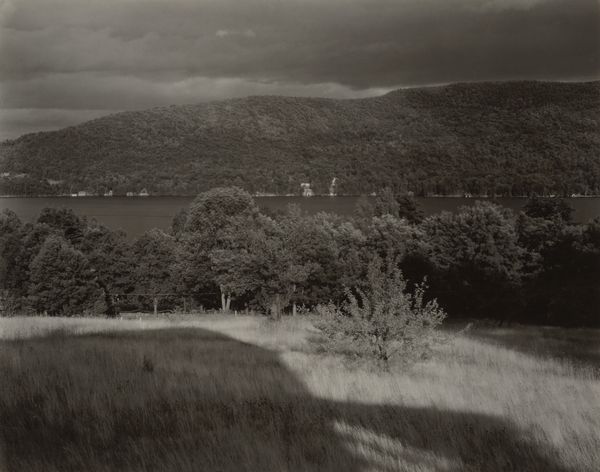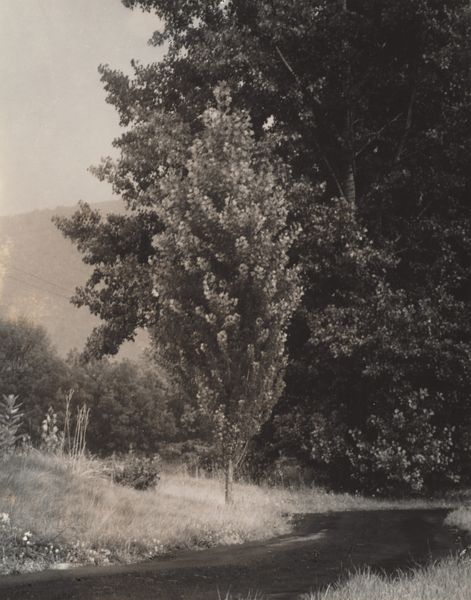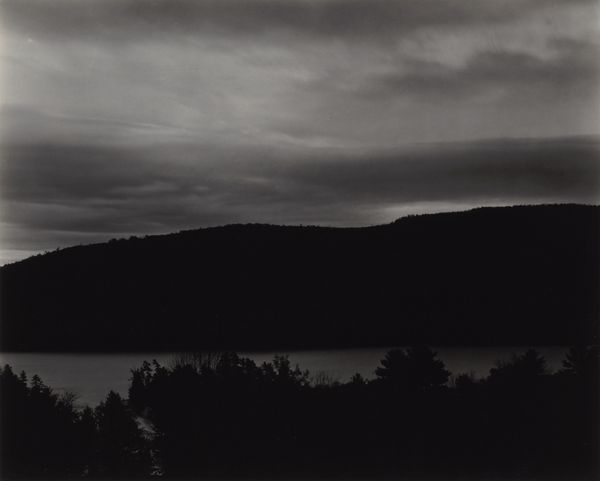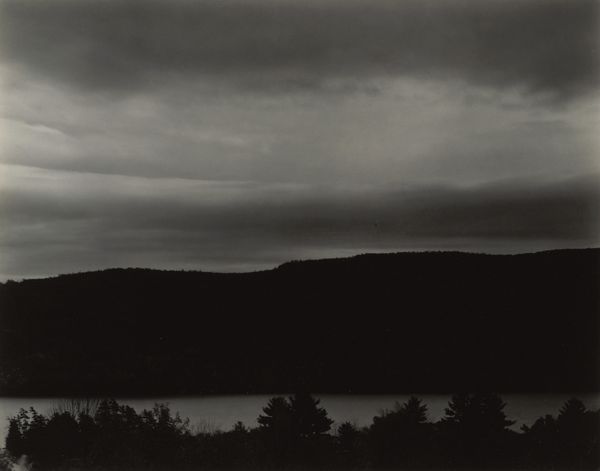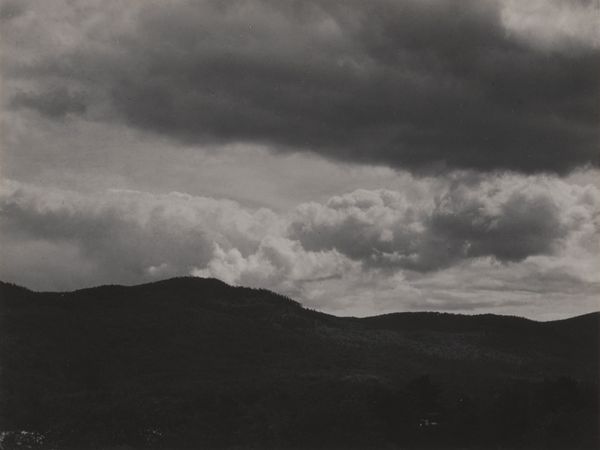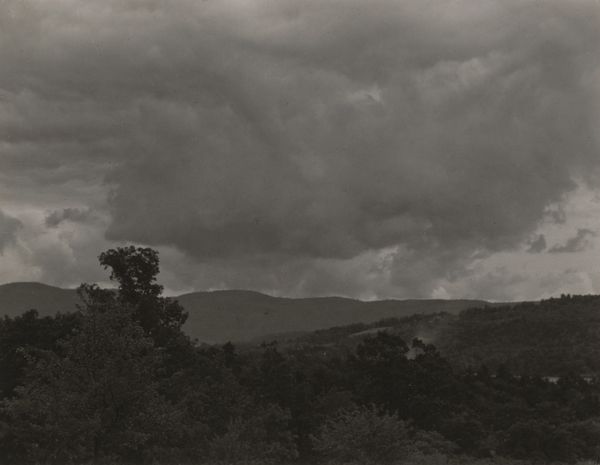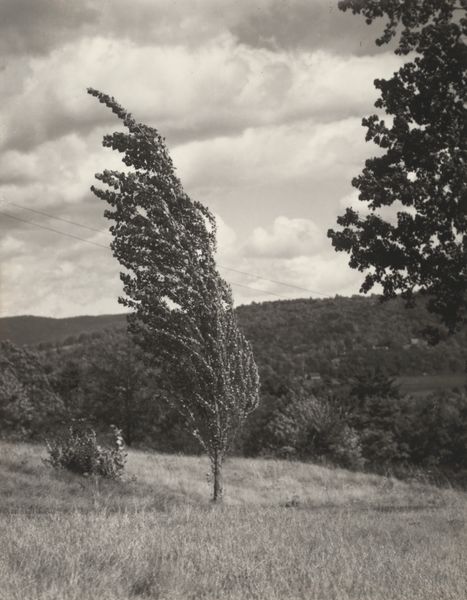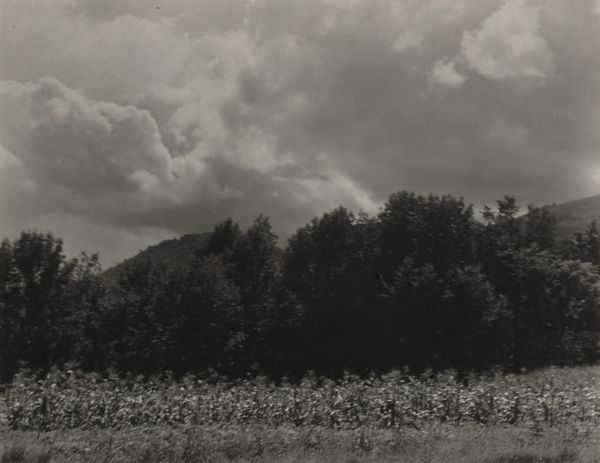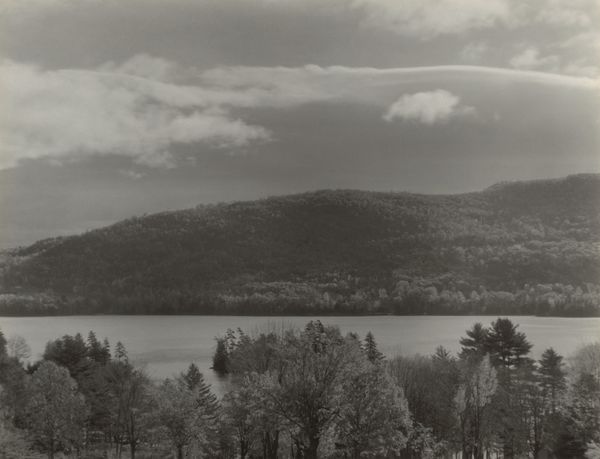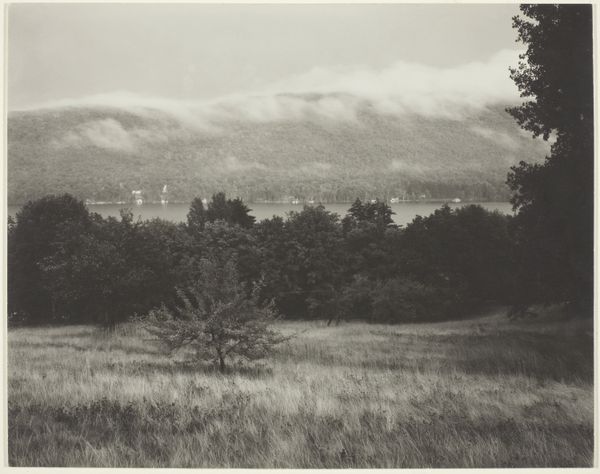
#
black and white photography
#
snowscape
#
countryside
#
eerie mood
#
warm monochrome
#
low atmospheric-weather contrast
#
monochrome photography
#
gloomy
#
monochrome
#
shadow overcast
Dimensions: sheet (trimmed to image): 18.8 × 24 cm (7 3/8 × 9 7/16 in.) mount: 57.8 × 42 cm (22 3/4 × 16 9/16 in.)
Copyright: National Gallery of Art: CC0 1.0
Alfred Stieglitz made this photograph, "Lake George from the Hill," using a camera and gelatin silver printing process. Photography, even more than painting, is fundamentally indexical. It mechanically records an impression of light. The gelatin silver print intensifies this quality. The gelatin emulsion captures the gradations of light in the scene, rendering the textures of the landscape in precise detail. The smooth, reflective surface of the print enhances the illusion of reality. The making of the image, its composition, is paramount. In his darkroom, Stieglitz would manipulate the tones, the contrast, bringing out the qualities he wanted to emphasize. The very act of printing a photograph is a layering of choices: paper, contrast, dodging and burning, cropping. Ultimately, Stieglitz's mastery of the photographic process, elevates photography to the realm of fine art. This challenges traditional distinctions between artistic vision and mechanical reproduction.
Comments
No comments
Be the first to comment and join the conversation on the ultimate creative platform.
